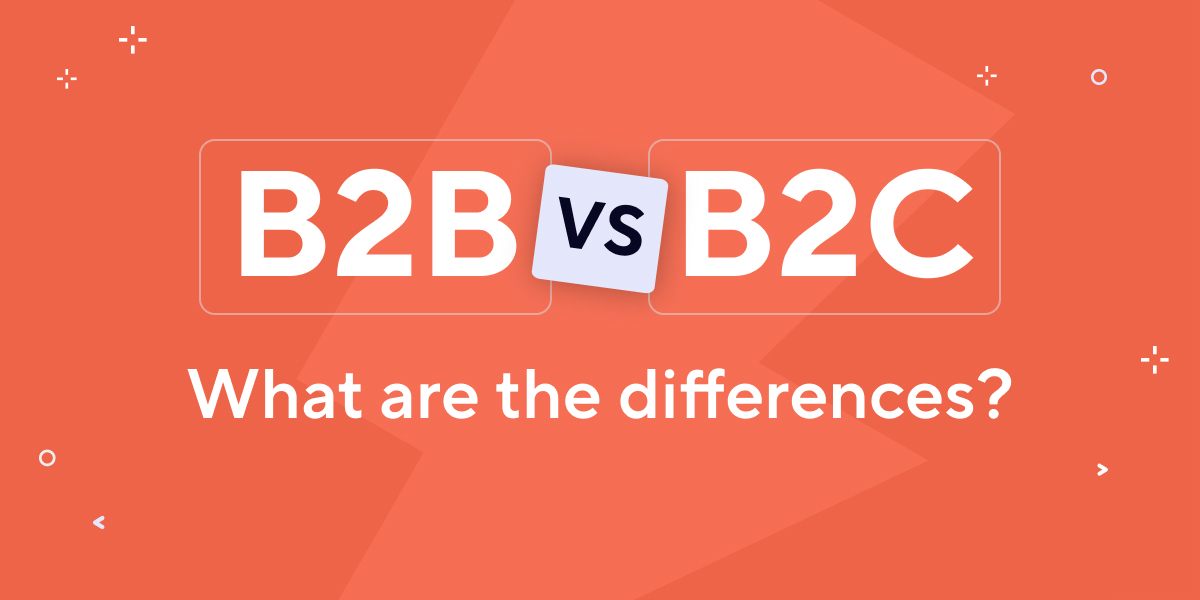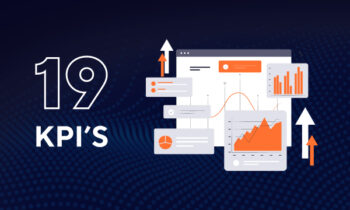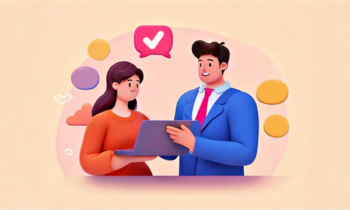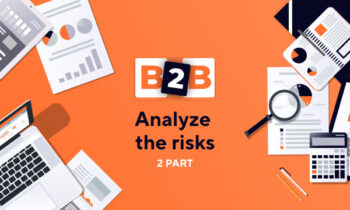B2B and B2C e-commerce: what are the differences?

When they embark on their e-commerce adventure, company managers often approach their project with a B2C consumer vision, often backed up by consultants or agencies who don’t have a good enough grasp of the particularities of selling to businesses. This is the best way to make a mistake and take your B2B e-commerce site down the wrong path. To avoid this, we’d like to take a look at the particularities of B2B e-commerce…
B2B e-commerce: a little-known giant
When we hear about internet sales in the media, we are most often talking about B2C e-commerce, i.e. only the part of sales that companies make to individuals… It has to be said that the figures for this sector of activity are enough to seduce journalists: in 2019, the €100 billion sales mark was passed for the first time in France by 200,000 sites, with almost 40 million consumers [1].
Although the figures for B2C eCommerce are significant, they do not come close to matching those for B2B eCommerce: in France, Internet sales between businesses (B2B) are worth €150 billion [2], or 1.5 times more than sales to individuals. In Germany and the UK, the figure is almost 4 times higher! Annual growth in B2B is 25%, compared with just 5.5% for B2C [2]. The average shopping basket is over €1,500 in B2B [3], compared with… €60 in B2C! The dynamics, stakes and sums involved are on a completely different scale…
In terms of potential, we are also seeing major differences: individual consumers are reaching a form of maturity when it comes to buying over the Internet, which explains the slower annual growth. But in B2B, online sales still only represent 25% of overall activity [4], which means that the potential for development is very strong.
B2B vs B2C: real structural differences
As we explained in the introduction, it is tempting to approach an online sales platform project with our reflexes as individual consumers. To put it bluntly, it would be like taking the wheel of a semi-trailer with just a “B” driving licence: watch out for breakage! The differences are so numerous and so significant that we need to forget these ‘bad’ reflexes if we are to tackle the problems of professional customers correctly.
Let’s take a look at the main features of a B2B e-commerce site…
- Supply and price management
In B2C, there is often just one shop associated with a brand, with a single price list, and sometimes a connection to marketplaces (Amazon, eBay, etc.) or social networks. In B2B, the configuration is more complex: each customer may have its own catalogue of products and specific prices. Listing constraints sometimes mean that product categories have to be hidden from customers. And the stacking of pricing rules can be very complex.
- Customer acquisition & lead nurturing
B2C logic is based on the triptych acquisition / conversion / retention. Many B2C e-commerce sites operate almost autonomously, with specific customer databases and – often – dedicated digital tools. In B2B, acquisition is the fruit of the action of the sales teams, who use their CRM to carry out social selling (1) and lead nurturing (2), with the opening of an account coming at the end of more or less lengthy negotiation phases. Interconnecting the B2B eCommerce site with the company’s business software is therefore essential.
- Multi-account management
For individuals, each person has a dedicated account. It couldn’t be simpler. In B2B, the configuration is necessarily more sophisticated: the buyer places an order, which may be validated by an approver, depending on the amount or products ordered. All under the supervision of the administrators, who are responsible for monitoring and controlling the processes. In short, there are several accounts for each company, with different rights that need to be managed and revoked according to the company’s movements.
- Multi-channel sales process
B2B e-commerce also goes further than its little B2C brother. In addition to the web shop, physical shop, social networks, marketplaces and mobile application channels, a B2B online sales platform must be able to interact ‘live’ with its customers’ ERP or purchasing tools, via a ‘punchout’ or API connection. More than just a shop, this platform becomes a “Self Service” portal, offering all the tools and services buyers need: delivery notes and invoices, contracts, spare parts tracking, consumption statistics, etc.
- High shipping constraints
Partial deliveries, backorders, split shipments, multi-site deliveries… Professionals have very specific requirements when it comes to the delivery of their orders, far from B2C standards. Being able to offer this whole range of services smoothly, pleasantly and quickly is an essential part of the shopping experience on a B2B e-commerce site.
- Specific means of payment and invoicing
Payment for a “professional” order is not managed in the same way as for a private individual, for whom the choices are often limited to bank cards, Paypal, cheques or transfers, with the maximum degree of complexity reached by payment in 3 instalments, free of charge. Businesses use a wide range of payment methods, both cash and due: your platform must therefore offer these different services, while being capable of managing outstanding amounts with alert and blocking thresholds, and interfacing with your banking software to automatically trigger direct debit orders. Invoicing needs to be flexible, to allow payment per order, or invoices grouped together according to a statement of account at regular intervals, such as weekly or monthly.
- Specific ergonomics
A HGV garage is not organised in the same way as a car dealership. The layout, decoration, workshop and even the car park are not designed in the same way, because they are aimed at different audiences. When it comes to the design and ergonomics of your website, it’s a similar story. Forget the advice of web designers overly focused on B2C: your business customers expect specific content, an efficient search engine and high added-value tools (one-click ordering, configurator, etc.). Functionality and performance take priority over design!
Need help with your e-commerce platform project? Ask our experts!
How can you make the right choices?
If your business strategy involves B2B e-commerce, we hope that reading this article has warned you against taking too much of an “end customer” approach. Because B2B is not dealt with in the same way as B2C, we recommend that you call on the services of specialists in Internet sales to businesses. To make sure you choose the right service providers, insist on solid references and proven experience of dealing with similar issues to your own. Avoid pre-formatted pitches that lack nuance and an approach specifically adapted to B2B. This way, by starting out on solid foundations surrounded by real professionals, your project will have every chance of succeeding as quickly as possible.
Sources
[1] Source: FEVAD
[2] Source: FEVAD Paris Retail Week
[3] Source: Forrester Research
[4] Source: Statista
Definitions
(1) Social Selling: In a B2B environment, social selling represents all the practices that involve using professional social networks to develop sales. Social selling often boils down to the use of the LinkedIn social network and, to a lesser extent, Twitter.
(2) Lead nurturing: Lead nurturing is a procedure that consists of maintaining or strengthening a marketing relationship with prospects who are not yet ready for a sales action or for whom this action has failed because it was too early. Lead nurturing involves nurturing and educating prospects through the use of newsletters, the creation of white papers and webinars, for example.


